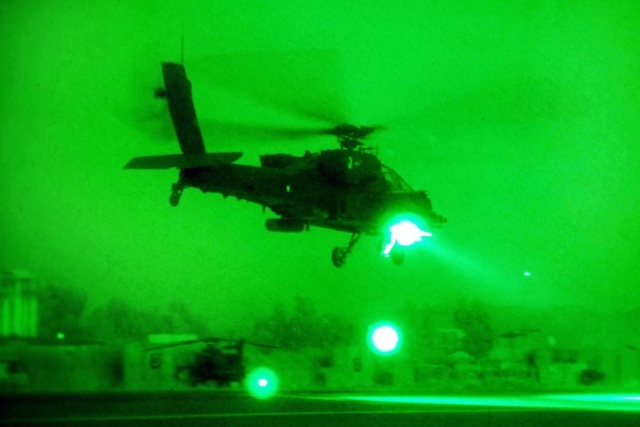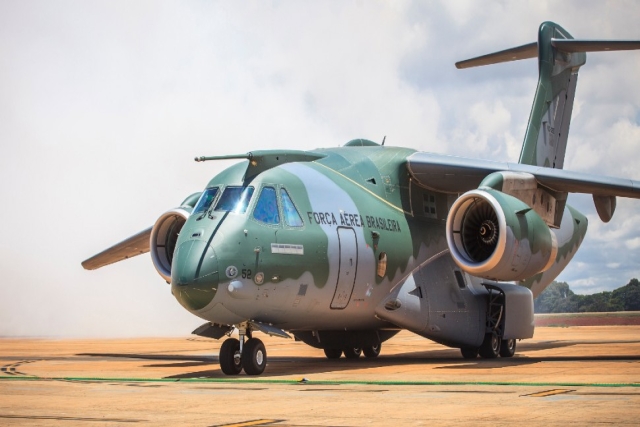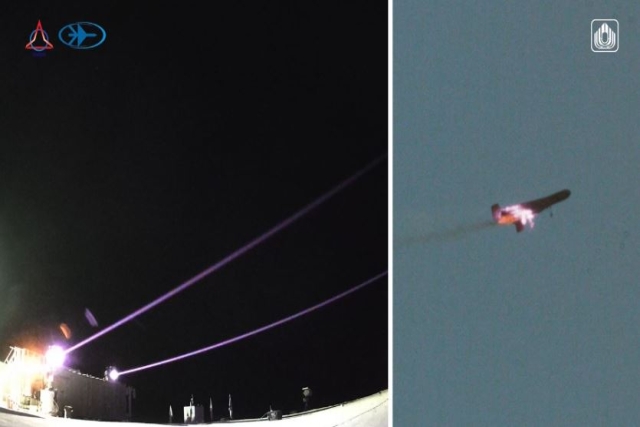Are Helicopters Giving Way to Drones as Combat Platforms?
Combat helicopters, once key to penetrating defenses and launching covert attacks, may be becoming obsolete as drones take over many of their roles.

Ukrainian attack helicopters
Combat helicopters, once the preferred weapons platform for penetrating enemy defenses, launching covert attacks and navigating through difficult terrain, may be on the way out given their limited use in recent conflicts amid drones taking over many of their functions.
Usage and destruction of helicopters in Ukraine
While during the initial months of the war, both Russia and Ukraine deployed combat helicopters to launch missiles at close enemy positions, their use has declined over time to a point where neither side has reported the destruction of the enemy's helicopter in recent months.
As of May 30, 2024, Russian MoD reports 274 Ukrainian helicopters destroyed since the war's onset; on April 1, it was 270. According to Ukrainian MoD on June 3, 2024, only 326 Russian helicopters have been destroyed since February 24, 2022. On May 1, 2024, it was 325, indicating minimal destruction in over a month, suggesting reduced helicopter usage.
Interestingly, while the West has generously donated all types of military equipment to Ukraine, there are not many combat helicopters among them.
The Dutch open-source intelligence defense analysis website Oryx claims that Ukraine has lost 46 helicopters, including 3 Mi-17V5 helicopters, 2 Mi-24P attack helicopters, and 5 Mi-24 attack helicopters. Meanwhile, Russia has lost 137 helicopters, including 6 Mi-8MTPR-1 electronic warfare helicopters, 4 Mi-24P attack helicopters, 4 Mi-24V/P/35M attack helicopters, 10 Mi-35M attack helicopters, 13 Mi-28 attack helicopters, and 60 Ka-52 Alligator attack helicopters.
Increasing drone usage
The use of attack drones has increased at the expense of helicopters. These drones are able to fly far (over 1000 kms in case of some) which is greater than the range of combat helicopters. For example the Boeing Apache has a combat range of 476 km while a Ukrainian UJ-26 Beaver kamikaze drone has a range of 1000 km with a 20kg payload. In addition, the drones are expendable, are far cheaper to manufacture than helicopters and have no crew.
The element of surprise that combat helicopters possess in executing covert missions has been taken over by loitering munitions and small first person view (FPV) drones that can hover over a tank or a soldiers’ dug-out and explode close to the target completely unnoticed.
The biggest advantage of attack drones over combat helicopters is that they are nearly invisible to radar thanks to their ultra-small radar cross-signature and an ability to fly barely tens of meters above the surface of land or water.
The extended reliance on attack drones by the Ukrainian military can be gauged from the fact that some 25000 drones have been destroyed by the Russians in two years (according to Russian MoD figures); yet, the most damaging attacks inside Russian territory such as on airfields and oil refineries have been caused by drones.
Using helicopters to strike drones
On May 6, Russian helicopters attacked upgraded Ukrainian naval drones armed with heat-seeking missiles during an engagement in Crimea. The drones evaded heavy fire and one exploded, with Moscow claiming five were destroyed.
Russia has experimented with mounting electronic warfare (EW) systems on its Mi-28 and Ka-52 helicopters to disable Ukrainian drones in the sky when they are flying in a swarm. This measure has met with limited success as the EW’s energy beams can strike at only the first few drones in the swarm while the rest are able to get past the helicopter.

FARA cancellation
The unexpected decision by the U.S. Army to terminate its ambitious Future Attack Reconnaissance Aircraft (FARA) program after spending at least $2 billion on the program has been attributed to concerns over the poor survivability rate of combat helicopters observed during the conflict between Ukraine and Russia.
General Randy George, the army's chief of staff, emphasized the evolving nature of aerial reconnaissance, citing the prevalence of sensors and weapons on unmanned systems and in space. This decision reflects a redirection of aviation modernization investments towards existing platforms like the Boeing Chinook and Sikorsky Black Hawk, aiming to mitigate the risk of decline and sustain the army's aviation capabilities.
“We are learning from the battlefield, especially Ukraine, that aerial reconnaissance has fundamentally changed... Sensors and weapons mounted on a variety of unmanned systems and in space are more ubiquitous, further reaching and more inexpensive than ever before,” he said.
Instead, the U.S. plans to invest in safer helicopter models and upgrades, such as equipping Apaches with drone controls for remote operations. Drones have emerged as a crucial aspect of modern warfare, offering a safer alternative to manned helicopters in frontline operations.
Using helicopters as drone launch platforms
The U.S. Army is also expediting its acquisition of small, uncrewed aircraft called “launched effects” from air platforms including helicopters, as well as launchers on the ground or off vehicles. With the cancellation of the manned FARA, funding has been redirected towards these unmanned systems.
Multiple companies are collaborating to develop prototypes, with Anduril Industries providing the air vehicle, Collins Aerospace handling mission systems, and Aurora Flight Sciences serving as the integrator. The U.S. Army is evaluating medium-range prototypes and planning for short and long-range versions.

Drones taking over from helicopters in reconnaissance roles
Drones offer military forces a diverse array of sensors and weapons that helicopters typically cannot carry due to size, weight, or other limitations. Examples include Synthetic Aperture Radar (SAR) for all-weather reconnaissance, Signals Intelligence (SIGINT) systems for electronic surveillance, laser designators for precision strikes, Electro-Optical/Infrared (EO/IR) cameras for real-time situational awareness, Electronic Warfare (EW) systems for disrupting enemy communications and air-to-surface missiles like the AGM-114 Hellfire and Anti-Radiation Missiles for anti-radar missions.
Additionally, drones can carry wide-area surveillance systems, Chemical, Biological, Radiological, and Nuclear (CBRN) sensors for hazardous material detection, and even anti-ship missiles for naval engagement, showcasing their versatility and superiority in modern warfare scenarios.
In recent conflicts, combat drones have demonstrated clear advantages over combat helicopters in various operational scenarios. For example, in Syria, U.S. MQ-9 Reaper drones have conducted precise airstrikes against high-value targets. Similarly, in Yemen, armed drones like the MQ-1 Predator and MQ-9 Reaper have provided persistent surveillance over critical areas, enabling continuous monitoring of enemy movements without risking manned aircraft.
In February 2024, a report by OCHA ReliefWeb revealed that Israel’s army has expanded the use of electronic-controlled quadcopters, originally designed for intelligence, to target and harm Palestinians. Originally meant for photography, these drones were re-purposed into air weapons, capable of precise surveillance and equipped with high-quality cameras. Developed by Israeli military industries, these one-meter diameter drones possess eavesdropping capabilities, can execute military tasks like shooting at targets and/or drop bombs and can even be modified into suicide drones.
Are helicopters sitting ducks for anti-aircraft systems and drones?
FPV (First-Person View) drones are cheap and easily available. They accurately navigate enemy dugouts, tank hatches, and vehicles, are difficult to detect and intercept, and can carry ~1.5 kilograms of explosives over 8 kilometers.
From August to December 2023, Russia used 1,485 FPV drones, while Ukraine used 2,874. Currently, several countries have pledged thousands of FPVs to Ukraine, which will also receive over a million domestically produced drones. Russia has increased its production to thousands each month.
Its importance in the battlefield is evidenced by the fact that both Russia and Ukraine are in a relentless race to upgrade FPV drones and develop counter-technologies. Moscow has introduced the world’s first ground-based FPV kamikaze drone and engineered aircraft-style carrier drones to deploy smaller FPV kamikaze drones, significantly extending their reach.

Helicopters Vs drones in combat
In September 2023, a Ukrainian FPV racing drone, potentially loaded with explosives, attempted to intercept a Russian Ka-52 attack helicopter and nearly succeeded. Despite the drone's modest speed compared to the helicopter.
A month ago, a video surfaced showing an Ukrainian FPV attempting to hit a Russian helicopter. The outcome of this attempted attack is not known.
Following the Russian attack on Ukraine in February 2022, traditional tactics became increasingly perilous for Russian and Ukrainian helicopter regiments. Ground-based air defenses, including guns and missiles, proved to be a significant threat to slow-flying rotorcraft. Helicopters have dropped like flies on both sides.
In response to heavy losses, both Russian and Ukrainian air forces have reevaluated their helicopter strategies, opting to keep helicopters away from the front lines except in rare cases. During the siege of Mariupol in 2022, Ukrainian transport helicopters flew dangerously low to resupply the city, resulting in multiple losses. By mid-2022, helicopters rarely ventured within a few miles of the front lines under normal circumstances. Both Russian and Ukrainian rotorcraft continued to transport troops and supplies, as well as engage enemy forces from a distance using unguided rockets.
In October 2023, Ukraine reportedly destroyed 15 Russian helicopters using ATACMS missiles in attacks on Luhansk and Berdyansk airfields. According to Ukraine's defense ministry, Russian defensive lines have become heavily reliant on rotary wing support due to poor fixed-wing close air support.
Russians have also used Iskander missiles to target multiple Ukrainian helicopters landing at a vital "forward arming and refueling point" (FARP). Depletion of Ukrainian air-defense resources and advancements in Russian communication technology have streamlined the Russian "kill chain," allowing for quicker targeting of Ukrainian assets.










